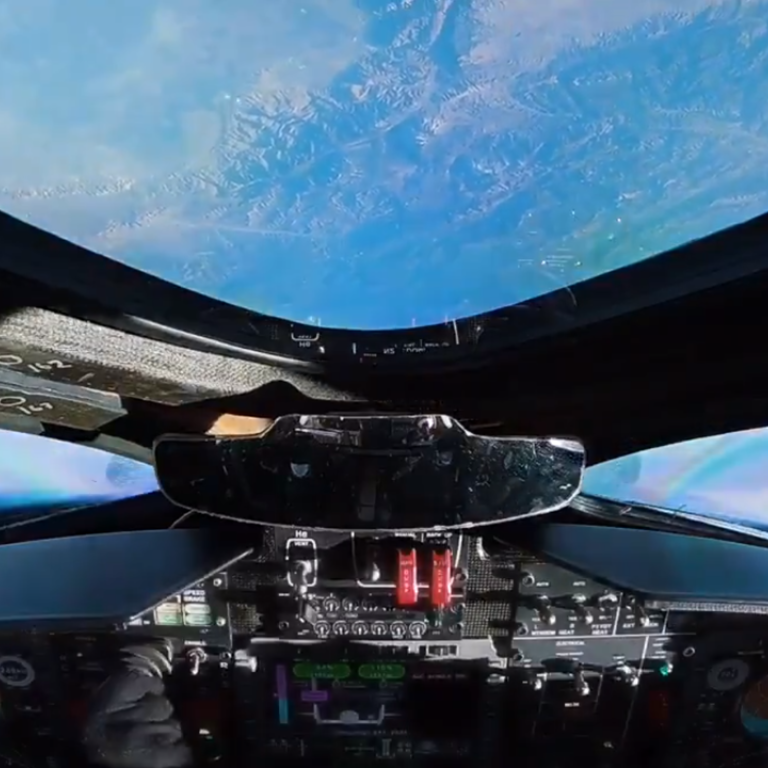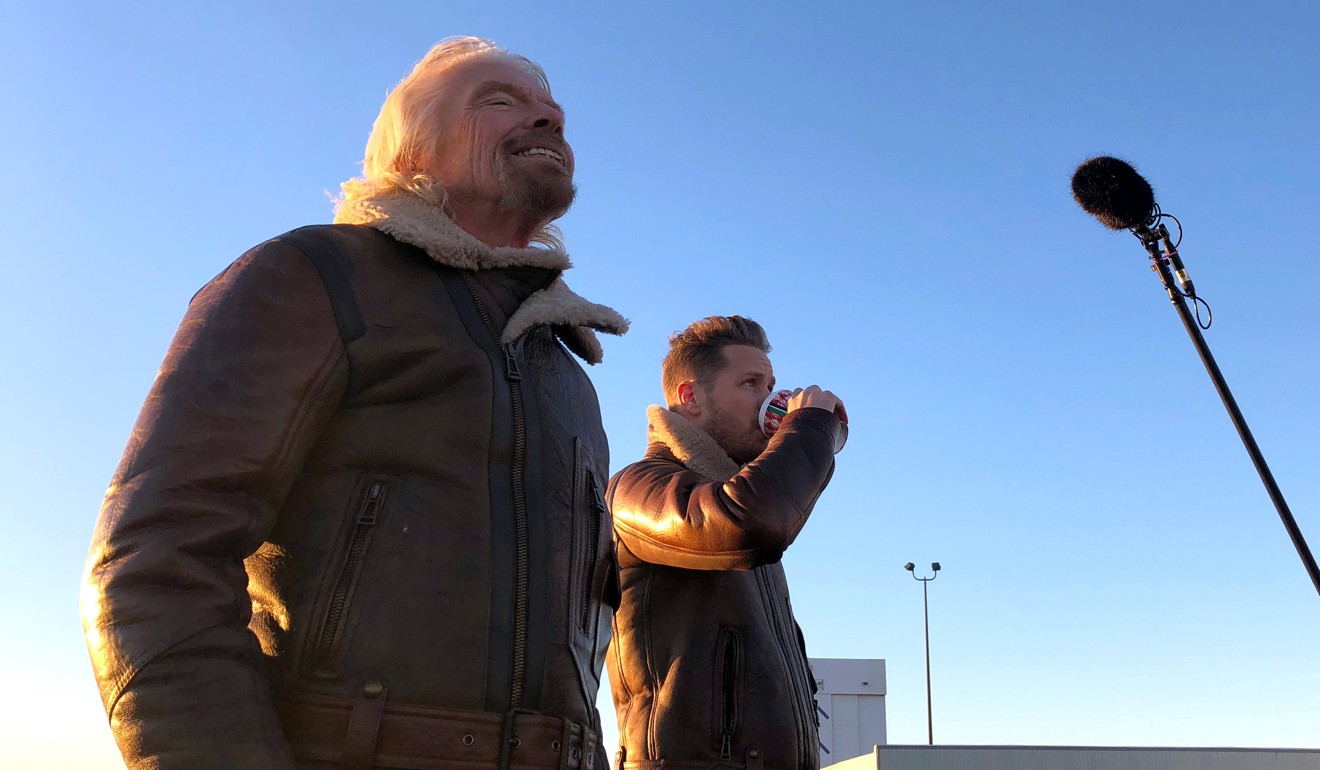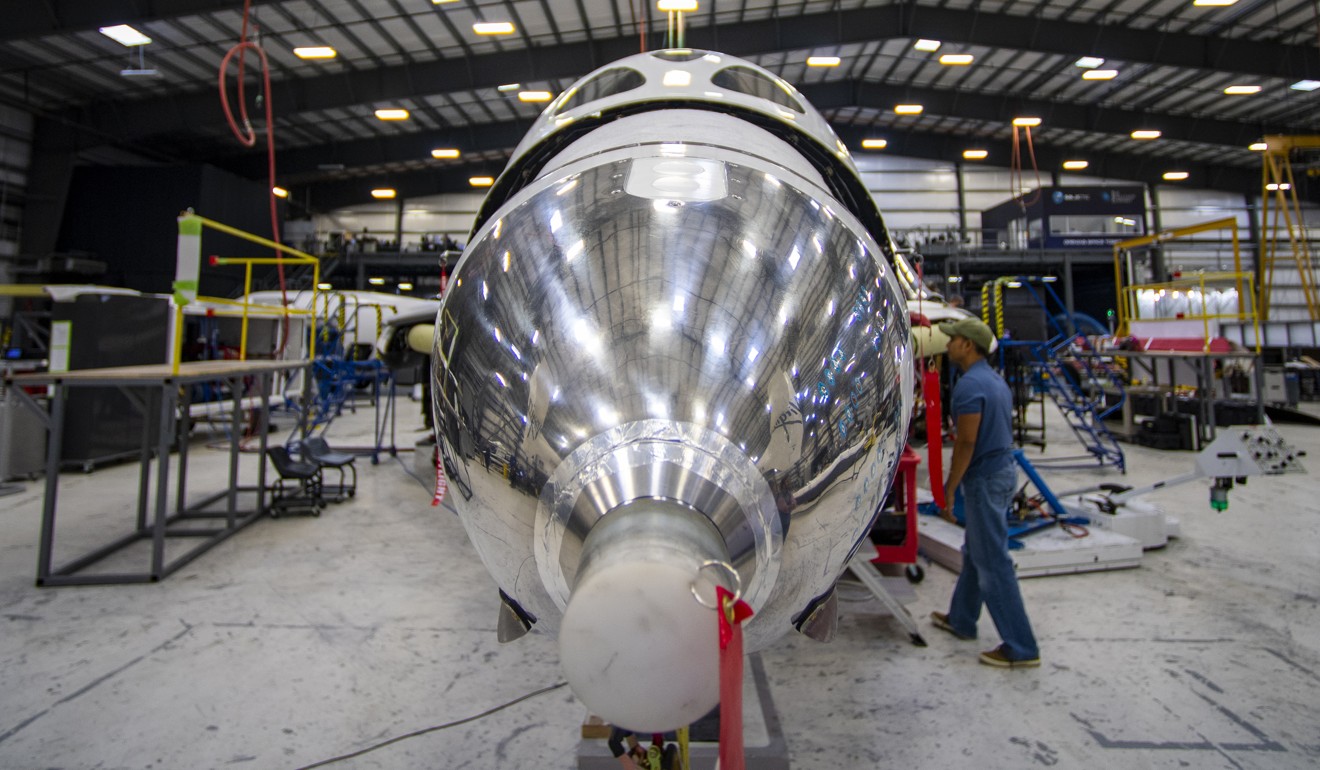
Breakthrough as Virgin Galactic launches humans into space, a US first since the end of shuttle programme
- The launch of Virgin Galactic’s SpaceShipTwo, which flew into space at an altitude of 80km, also makes it the first ever US commercial flight to carry humans
A Virgin Galactic rocket plane blasted off on Thursday and returned safely to the California desert, capping off years of difficult testing to become the first US flight to take humans into space since Nasa’s shuttle programme ended in 2011, and the first US commercial operation to do so ever.
The test flight foreshadows a new era of civilian space travel that could kick off as soon as 2019, with British billionaire Richard Branson’s Virgin Galactic battling other billionaire-backed ventures, like Amazon.com founder Jeff Bezos’ Blue Origin, to be the first to offer suborbital flights to fare-paying tourists.
Virgin’s twin-fuselage carrier airplane WhiteKnightTwo, holding the SpaceShipTwo passenger spacecraft, took off soon after 7am local time from the Mojave Air and Space Port, about 90 miles (145km) north of Los Angeles.
Richard Branson, wearing a leather bomber jacket with a fur collar, attended the take-off along with hundreds of spectators on a crisp morning in the California desert. After the rocket plane reached an altitude of 50 miles (80km), a crying Branson high-fived and hugged spectators.
The carrier airplane had hauled the SpaceShipTwo passenger rocket plane to an altitude of about 45,000 feet (13,700 metres) and released it.
Seconds later, SpaceShipTwo fired, catapulting it to the edge of space and high enough for the pilots, Mark Stucky and Frederick Sturckow, to experience weightlessness and see the curvature of the planet.

Virgin’s latest flight test comes four years after the original SpaceShipTwo crashed during a test flight that killed the co-pilot and seriously injured the pilot, dealing a major setback to Virgin Galactic, a US offshoot of the London-based Virgin Group.
“We’ve had our challenges, and to finally get to the point where we are at least within range of space altitude is a major deal for our team,” George Whitesides, Virgin Galactic’s chief executive, told reporters during a facilities tour on Wednesday in Mojave, where workers could be seen making preflight inspections of the rocket plane.
Want to go to space in 2019 with Virgin Galactic? Pack courage … and US$250,000
Critics point to Branson’s unfulfilled space promises over the past decade.
But the maverick businessman told a TV interviewer in October that Virgin’s first commercial space trip with him on-board would happen “in months and not years”.

Thursday’s test flight had its two pilots on-board, four Nasa research payloads, and a mannequin named Annie as a stand-in passenger.
More than 600 people have paid or put down deposits to fly aboard Virgin’s suborbital missions, including actor Leonardo DiCaprio and pop star Justin Bieber. A 90-minute flight will cost US$250,000.
Short sightseeing trips to space aboard Blue Origin’s New Shepard rocket are likely to cost around US$200,000 to US$300,000, at least to start. Tickets will be offered ahead of the first commercial launch, and test flights with Blue Origin employees are expected to begin in 2019.
Other firms planning a variety of passenger spacecraft include Boeing, Elon Musk’s SpaceX and late Microsoft co-founder Paul Allen’s Stratolaunch.

In September, SpaceX said Japanese billionaire Yusaku Maezawa, founder and chief executive of online fashion retailer Zozo, would be the company’s first passenger on a voyage around the moon on its forthcoming Big Falcon Rocket spaceship, tentatively scheduled for 2023.
Space tourism flights with Virgin and Blue Origin are mere months from lift-off. Their journeys will be worlds apart
Musk, the billionaire CEO of electric carmaker Tesla, said the Big Falcon Rocket could conduct its first orbital flights in two to three years as part of his grand plan to shuttle passengers to the moon and eventually fly humans and cargo to Mars.
Bezos’ New Shepard has already flown to an altitude of 50 miles (80km) – an internationally recognised boundary between Earth’s atmosphere and outer space known as the Karman line – though the Blue Origin trip did not carry humans.

